2023 Mercedes-Benz EQS SUV Review and Test Drive
A pricey but worthy pick in a growing luxury electric SUV segment.
Capital One
Article QuickTakes:
The 2023 Mercedes-Benz EQS SUV is the automaker's latest fully electric vehicle and the first pure electric Benz built in the United States; it's made at the company's Alabama factory. Based on a platform shared with the EQS sedan, the 2023 EQS SUV sits at the top of Mercedes' EV range in terms of space, connectivity, and comfort (for up to seven people).
 Jim Resnick
Jim Resnick
Two versions are available, each in Premium, Exclusive, and Pinnacle trim levels. The EQS 450+ supplies 355 horsepower and 419 pound-feet of torque and has rear-wheel drive or 4Matic all-wheel drive. The EQS 580 boasts 536 horsepower and 633 lb-ft of torque, and includes 4Matic as standard equipment. Pricing starts at about $106,000 for the base EQS 450+ and rises to about $127,000 for the EQS 580 4Matic, including the destination charge.
The EQS 450+ test vehicle came in Pinnacle trim with rear-wheel drive, the Hyperscreen setup, executive-style second-row seats, and 14 other options for a manufacturer's suggested retail price of about $124,000, including the $1,150 destination charge. Mercedes-Benz provided the vehicle, which I tested in Arizona, for review.
 Jim Resnick
Jim Resnick
The Design
The Mercedes-Benz EQS SUV doesn't stray far from its combustion-engine siblings in the design department. The styling features familiar shapes and forms, though the front end deviates slightly from its gas-fired family members with a different grille shape.
Inside, all the materials appeared high quality to me. The exterior paint color on my test example was silver, and an interior mixture of black leather, aluminum, piano black, textured gray, and soft blue accompanied it.
Frequently touched interior components like the seat controls, air vents, a few dials, and the shift paddles on the back of the steering wheel were made of aluminum in my test vehicle. This imparted a strong, solid, and physically cool feeling. If you want to warm things up visually, the vehicle settings offer a range of different accent-lighting colors.
The dashboard is home to a 56-inch-long curved glass Hyperscreen display that presents three different views to the driver and front passenger. One of those views is the latest Augmented Reality Navigation system, which places animated arrows and guides on live maps shown both in the dashboard and in the head-up display.
The physical switchgear is conventional Mercedes fare, with a thin stalk to the right of the steering wheel to operate the transmission and a stalk on the left side to control the turn signals and wiper/washer adjustments. The headlight switch is to the left of the dash, while multifunction buttons on the steering wheel give the driver control of commonly used functions such as adaptive cruise control, phone activation, and favorite radio stations. The paddle shifters mounted on the steering wheel control the EV's rate of regenerative braking.
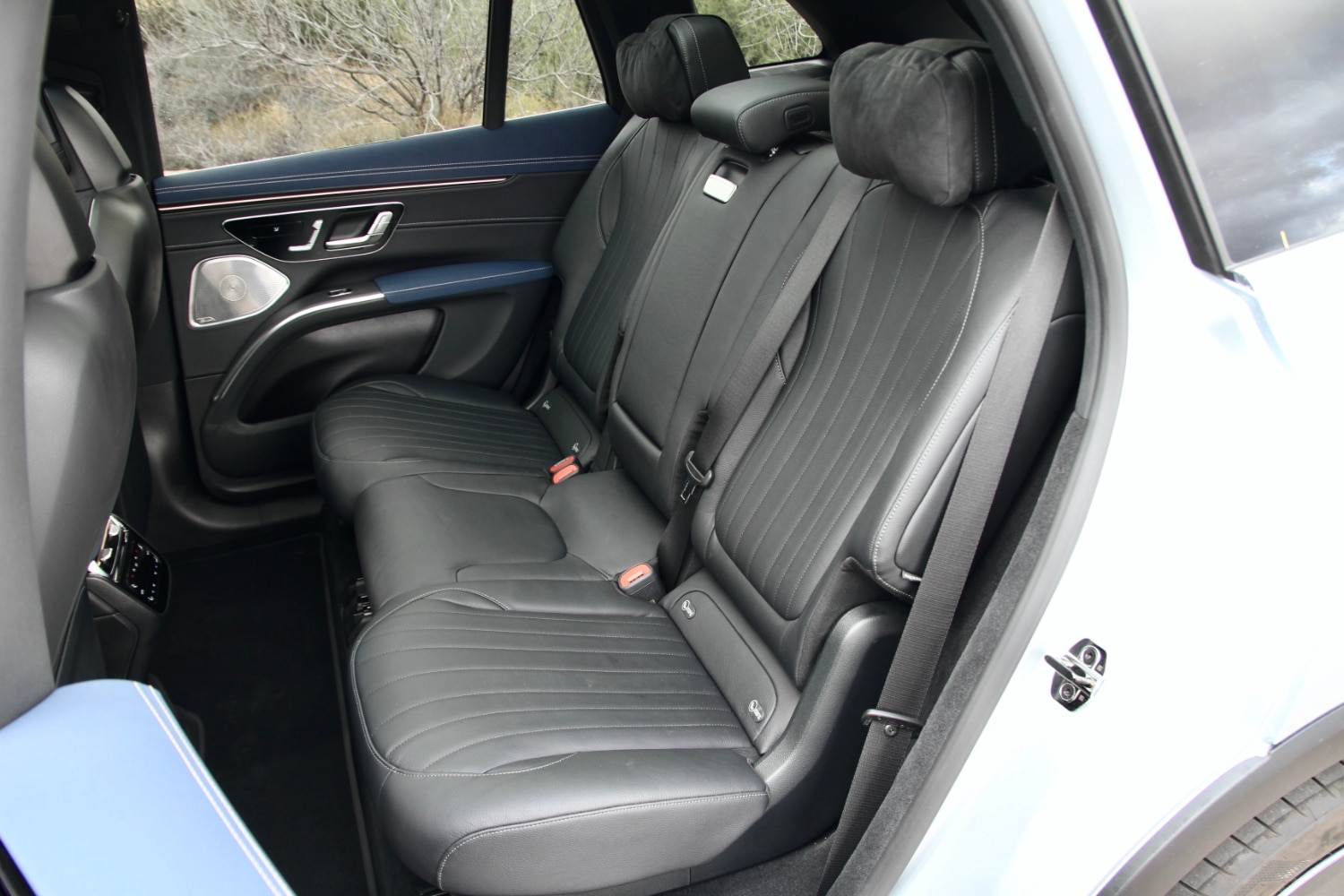 Jim Resnick
Jim Resnick
Front-seat comfort is very good. However, like another electric Mercedes I recently tested, the chairs lack thigh support at the far edges of the seat bottom. People with long legs will find this causes some fatigue on lengthy drives. It's worth mentioning because, in my experience, Mercedes seats in the past offered outstanding support for extended periods of driving. In the EQS SUV, my long legs became fidgety after an hour and a half.
Second-row seat comfort I found to be much better than average—the seats recline and offer fore-aft travel. There's no bumping or chafing of knees against the front seatbacks, either. Also, like the front seats, the second-row head restraints use luxurious-feeling pillows that you can reposition in different ways.
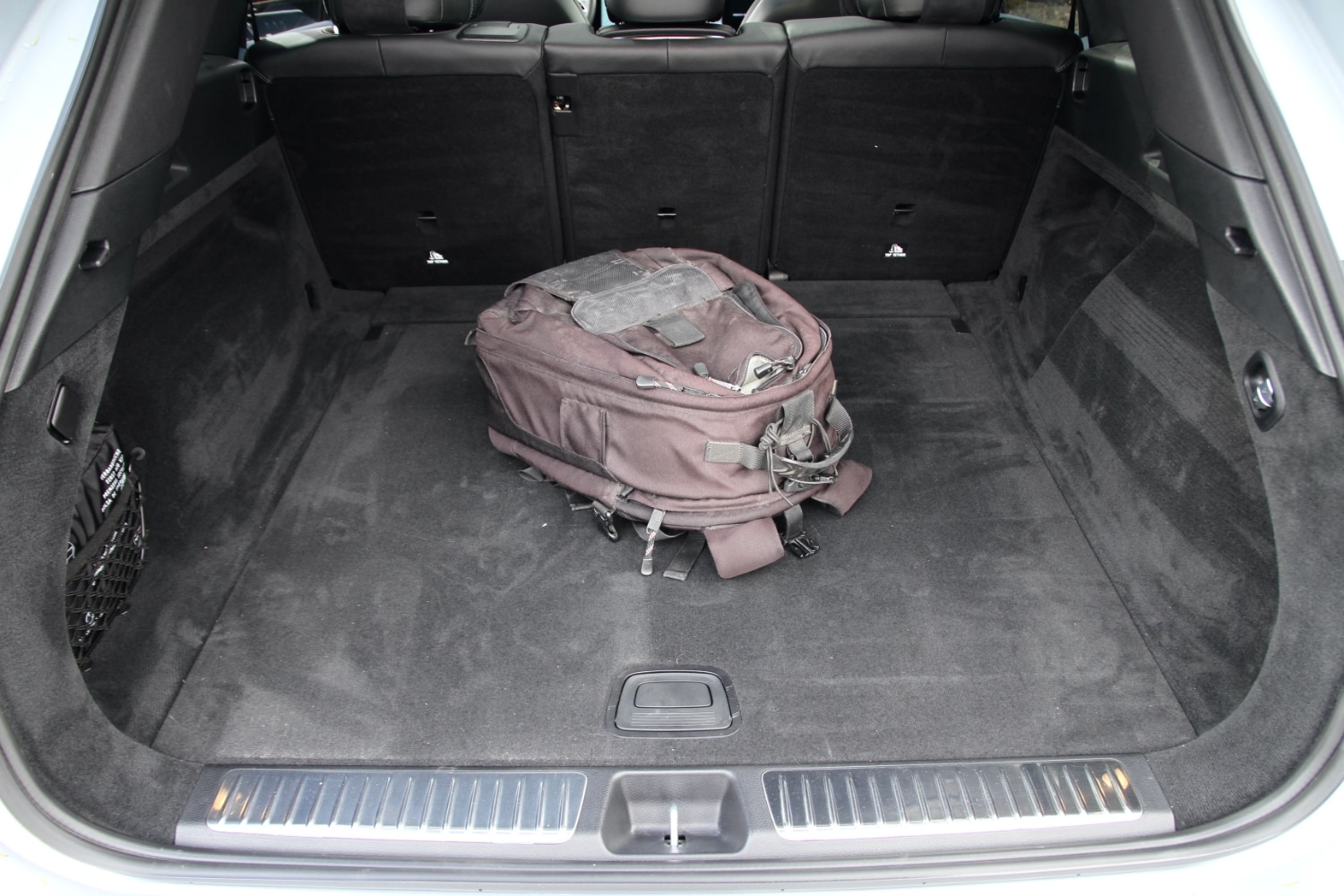 Jim Resnick
Jim Resnick
While Mercedes offers a third-row seat in the EQS SUV, my test vehicle did not have one. Cargo space behind the second row is adequate at 31 cubic feet. The storage bin between the front seats is deep but isn't as wide as in some large SUVs. The two cupholders for the front row can swallow all but the biggest of water bottles.
The Technology
The Mercedes Benz User Experience Hyperscreen that's optional in the EQS 450+ might be fascinating to some and bewildering to others. I like it very much, both for the clarity in how Mercedes presents the information and the sheer volume of stuff packed into it.
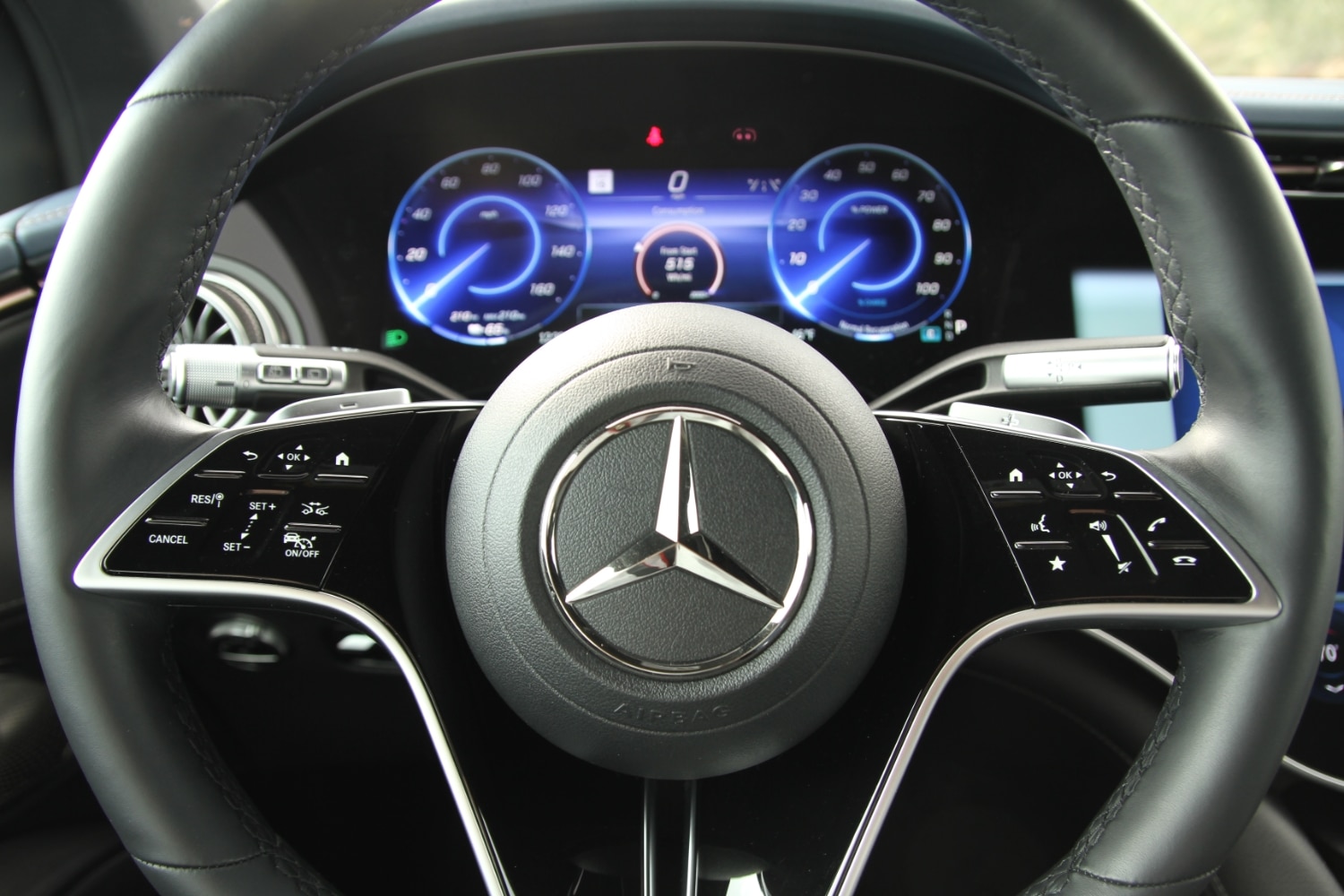 Jim Resnick
Jim Resnick
As mentioned above, virtually the entire length of the dashboard is taken up by digital displays. There's a 12.3-inch digital instrumentation panel, a 17.7-inch main central touchscreen, and another 12.3-inch touchscreen directly in front of the passenger. These three screens are housed beneath a 56-inch-long expanse of black glass.
Setting up your Hyperscreen preferences is pretty straightforward, given the depth and complexity of the information the system provides. Highlights include navigation, audio, climate, phone and connectivity, voice recognition, driving modes, personal preferences, and more. The optional head-up display can also depict sections of this data.
Apple CarPlay integrates seamlessly, though with a navigation system as elaborate as the one in the EQS, I set aside my iPhone just to get the full dose of tech from the SUV.
The most user-friendly piece for me of the infotainment system is the convenient "Hey, Mercedes" phrase used to wake up the voice-recognition system. When I asked the system to change radio stations, navigate to a destination, or set the temperature, it complied with very few stumbles. It's even able to raise the temperature if you simply say: "I'm cold." The only downside is that it sometimes woke up when I merely uttered "Mercedes" without the intention of activating it.
A highlight of the navigation system is software that can calculate and suggest any needed charging stops along a lengthy route and react in real time to traffic jams or a change in driving style to determine when charging might be necessary. It can also weigh variables along the route, like topography, ambient temperature, elevation, and even ventilation requirements.
Mercedes continues to offer what I believe to be one of the strongest intelligent driving-assistance systems on the market—for example, its adaptive cruise control feature latches without fanfare onto vehicles entering the lane ahead of you on the highway.
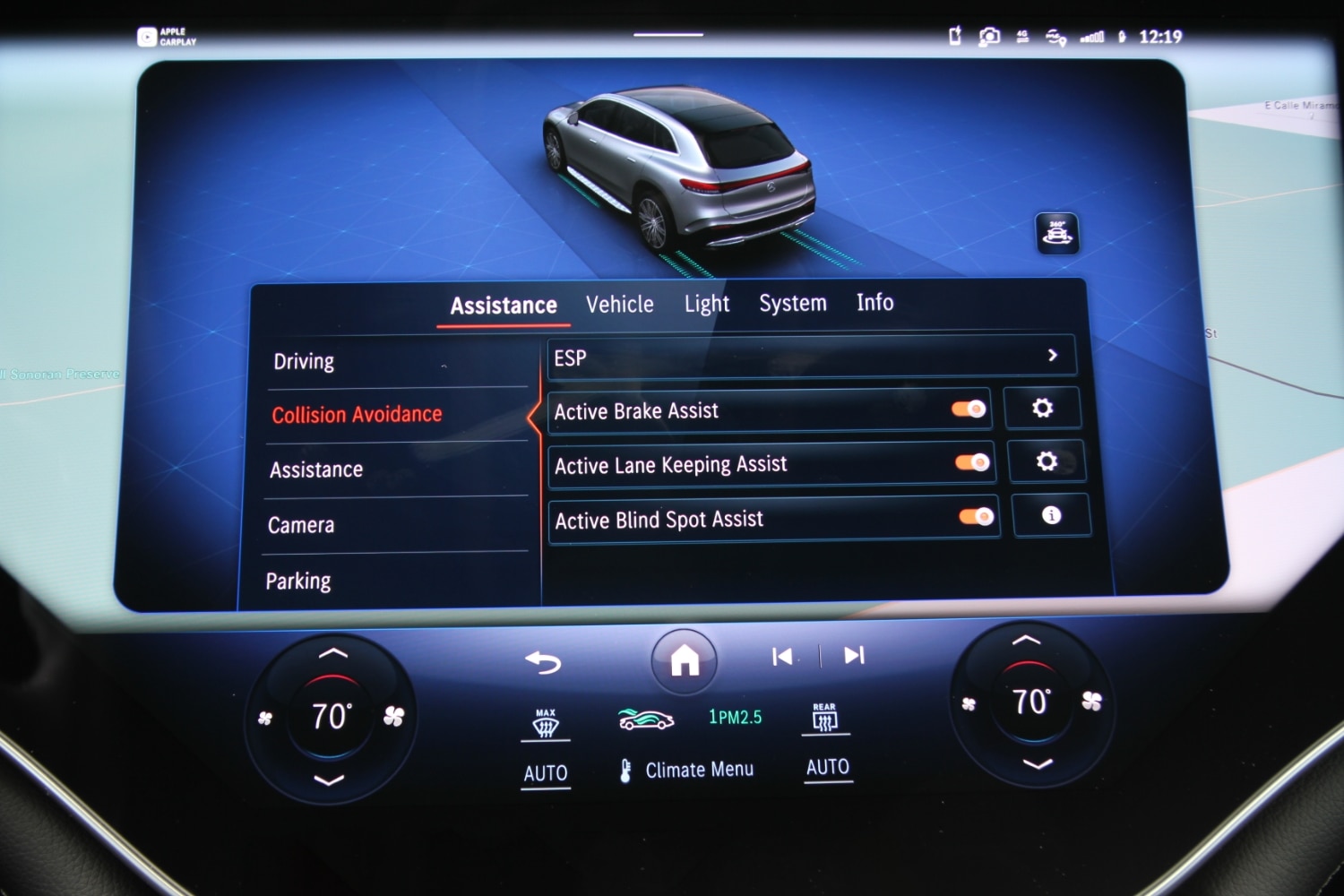 Jim Resnick
Jim Resnick
When descending long grades with the adaptive cruise control on, I found that the EQS 450+ kept to a prescribed speed exceedingly well. It was likely aided by the much greater capacity of the electric motor's robust regenerative braking capabilities. Internal combustion engines provide a small measure of compression braking on a closed throttle, as when descending a slight hill. However, some grades can be steep enough to require a tap of the brakes to maintain the desired speed or, as commercial trucks often do, a downshift into a lower gear. Score an advantage for EVs; I find that the braking effect of electric motors is more effective.
During my test, the lane-keeping and lane-centering systems imparted no worrisome behavior. However, as in nearly all vehicles, soft-shouldered roads without lines at the edge didn't always induce a correction. The takeaway? Never stop actively driving, even with all the possible assists active.
This is also worthy of mention: You can change the way the electric drivetrain sounds through the stereo speakers. Choices include Silver Waves (described by Mercedes as "rich and clean") to Vivid Flux ("crystalline and humanly warm") or Roaring Pulse ("booming and extroverted").
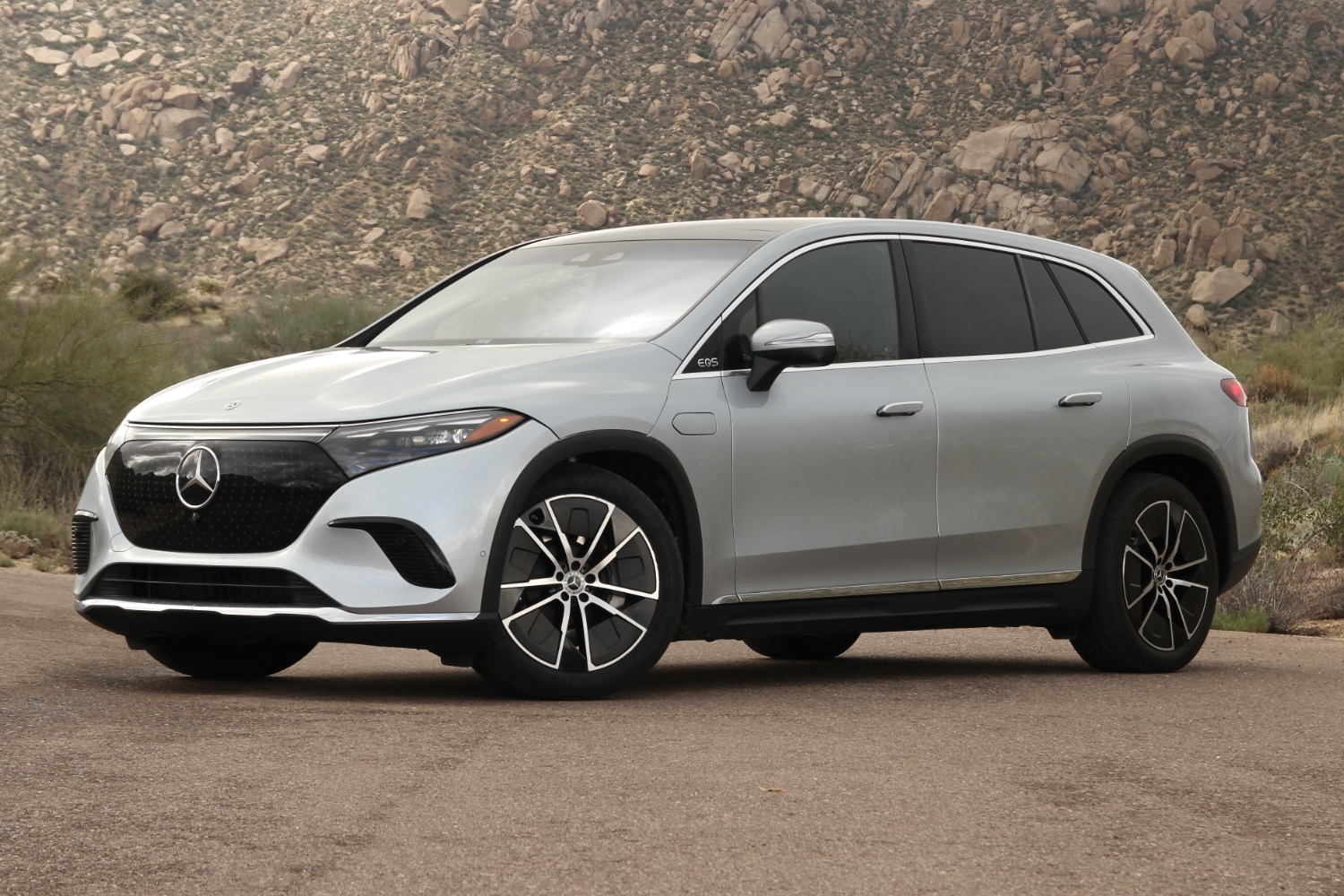 Jim Resnick
Jim Resnick
The Drive
With 355 horsepower and 419 lb-ft of torque, my EQS 450+ rear-drive test vehicle was not lacking in thrust, but with nearly 6,000 pounds to tote around, the overall feel is dampened.
According to Mercedes, it takes 6.5 seconds to reach 60 mph, and passing power is not robust. Multiple driving modes allow a bit of fiddling to find settings more to your tastes, but this doesn't seem to add any outright power at full throttle. The EQS 580 model is likely to be more satisfying, thanks to its additional 181 horsepower and 214 lb-ft of torque.
With four-wheel-steering that turns the rear wheels up to 10 degrees in the opposite direction of the fronts at very low speeds, the EQS has the potential to negotiate tight spaces and parking lots better than other SUVs of the same size. Lane changes on the freeway can feel more natural, too, as the rear wheels steer in the same direction as the fronts at high speeds.
Mercedes built its reputation on luxury, and I found the EQS 450+ holds to that tradition. My test vehicle had the Acoustic Comfort upgrade, so the only real sound evident in the SUV at steady freeway speeds was a slight wind rush around the side mirrors. If you want a sanctuary on wheels, I would check that option box.
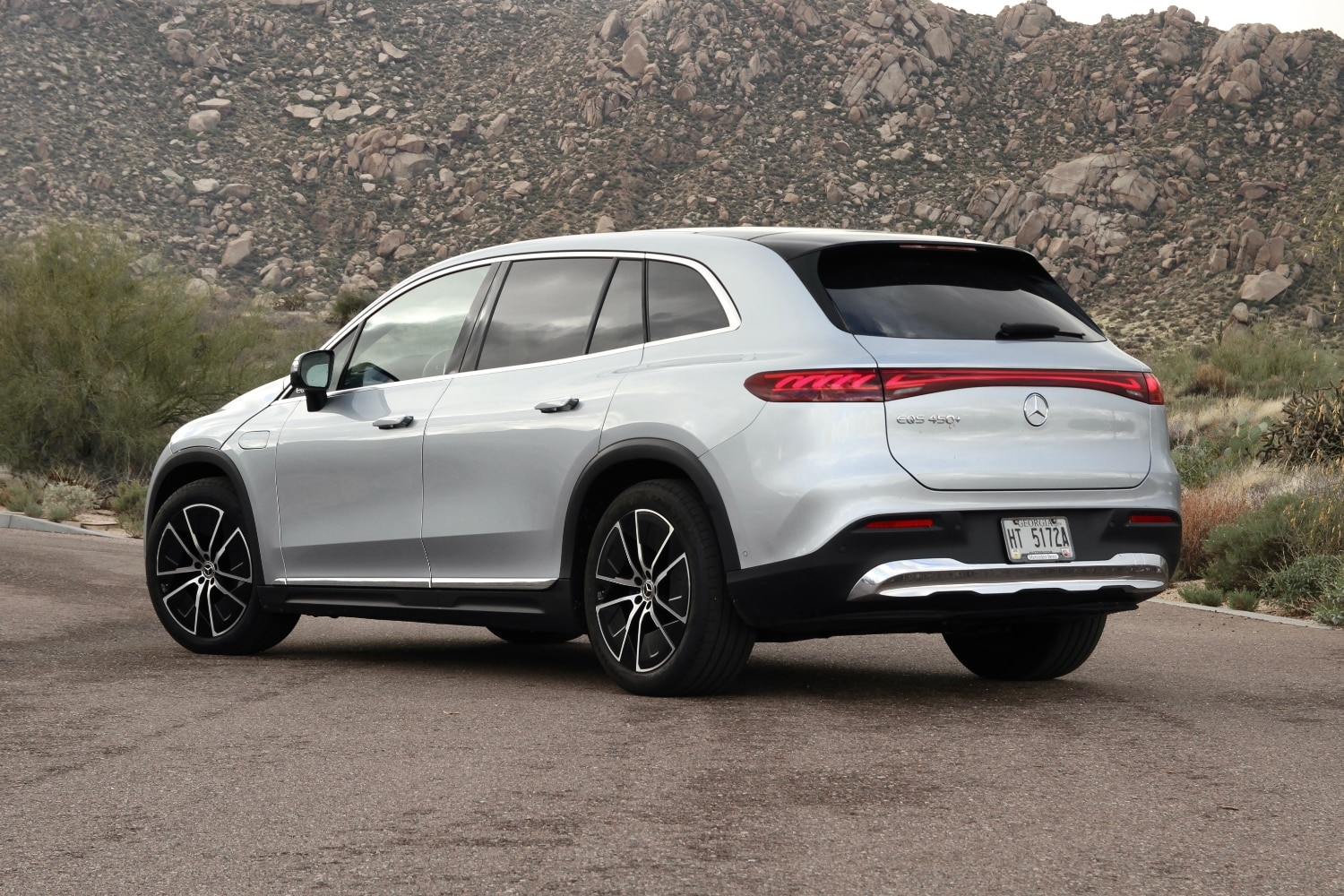 Jim Resnick
Jim Resnick
The EQS 450+ provides four rates of brake regeneration triggered by the shift paddles on the steering wheel. You can select None, Normal, Strong, and Intelligent. However, driving in true one-pedal mode—where you rarely touch the brake pedal—requires that you disable the vehicle's "creep" mode. That's located within the main infotainment menu under Vehicle Settings. (Enabling creep mode allows the vehicle to inch forward as you release the brake a bit from a dead stop, similar to an ICE car with a traditional automatic transmission.)
Also, during regeneration, the brake pedal actually moves on its own. It replicates the braking effect of regeneration, even though you are not applying the pedal yourself. I found this slightly annoying when driving in None, Normal, and Intelligent modes because in those modes, you often still must apply the brakes for regular traffic conditions. In Strong regen mode, I found that I rarely needed to apply the brake pedal myself, except in an alarming instance, so it felt less noticeable.
The brake pedal feel, however, is a bit mushy. Couple this with the EQS's very light-effort steering, and it contributes to a somewhat anesthetized feeling when driving the EQS 450+, especially in its default drive settings.
Mercedes pairs the synchronous motor in the EQS 450+ with a 108.4-kWh battery, yielding a maximum range of 305 miles. Over a longer-than-normal 95-mile mix of freeway, suburban, and city driving, the EQS 450+ gave me a consumption rate of 35.2 kWh/100 miles, which is considerably better than the official estimate of 39 kWh/100 miles. So good, in fact, that I redid the route a second time on another day, which returned a still-respectable 37.1 kWh/100 miles.
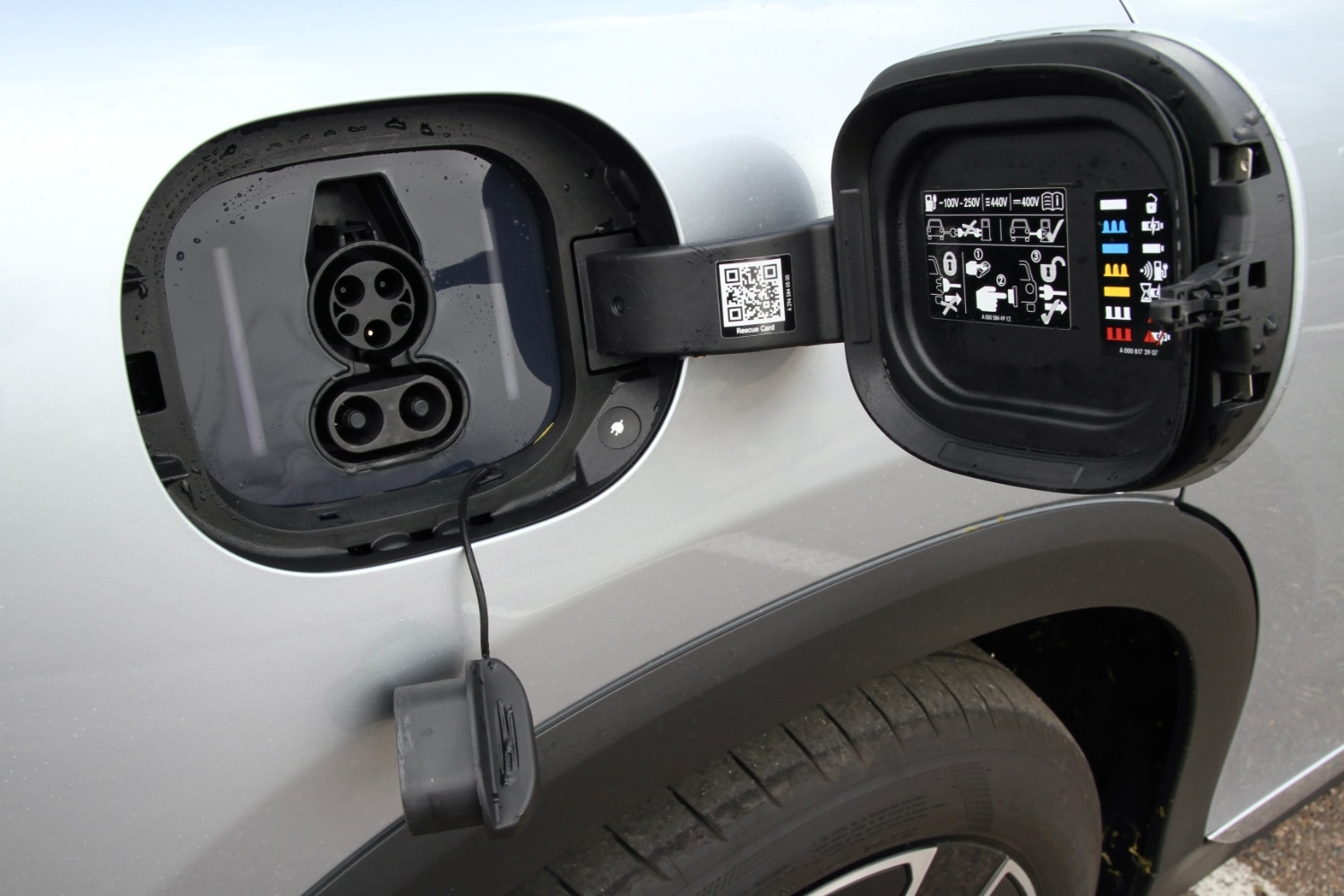 Jim Resnick
Jim Resnick
At the start of the route, the EQS 450+ had 198 estimated miles of range at 59 percent battery charge. In the end, it showed 105 miles of range and 31 percent charge. To paraphrase an old saying, there may be no such thing as a free lunch, but you can sometimes get a few free miles.
Keep in mind, however, that range isn't the only factor at play in electric efficiency. The EQS 450+ nets an efficiency score of 85 MPGe, whereas the Rivian R1S travels farther in terms of outright range but only nets 64 MPGe. The Tesla Model X, meanwhile, racks up 102 MPGe. (The Model X Plaid is rated at 98.)
When it's time to recharge the EQS 450+, Mercedes estimates it will take 12.5 hours of charging at 240 volts from a 32-amp AC charger to restore a completely spent battery to 100%. However, the automaker says it should take just 31 minutes to go from 10% to 80% battery charge on a 200-kW DC fast charger.
Is the 2023 Mercedes-Benz EQS SUV a Good EV?
The 2023 Mercedes-Benz EQS 450+ is a fine choice for a family that places great importance on comfort, quiet, a generous dose of the latest tech, and active safety features. And, of course, for those who can afford the roughly $105,000 starting price.
 Jim Resnick
Jim Resnick
So although the new EQS SUV is expensive, Mercedes may have hit the sweet spot with features and drivability in this fast-growing market segment.



